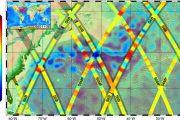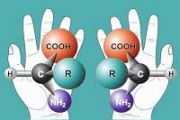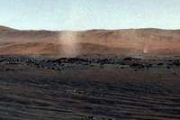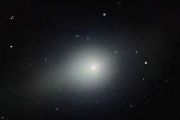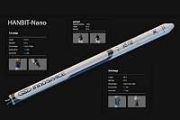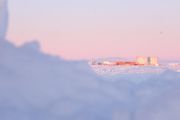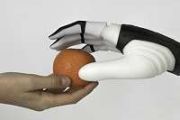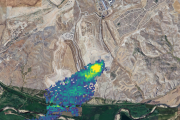
Copernical Team
Antares lines up $96 million to advance microreactor rollout
 Antares has raised $96 million in Series B financing to support development and deployment of its compact nuclear microreactors for defense and space customers. The round, led by Shine Capital with participation from Alt Capital, Caffeinated, FiftyThree Stations, Industrious and other investors, includes $71 million in new equity and $25 million in debt earmarked for equipment purchases, factory
Antares has raised $96 million in Series B financing to support development and deployment of its compact nuclear microreactors for defense and space customers. The round, led by Shine Capital with participation from Alt Capital, Caffeinated, FiftyThree Stations, Industrious and other investors, includes $71 million in new equity and $25 million in debt earmarked for equipment purchases, factory Secure ESA contract advances GomSpace satellite cybersecurity
 GomSpace has signed a 1.2 million euro (13.2 MSEK) contract with the European Space Agency (ESA) to develop a security-enhanced generation of its NanoCom product line under the SECUSAT program. The agreement supports the evolution of secure satellite communications capabilities for both institutional and commercial users.
SECUSAT will upgrade GomSpace communication and onboard computer pro
GomSpace has signed a 1.2 million euro (13.2 MSEK) contract with the European Space Agency (ESA) to develop a security-enhanced generation of its NanoCom product line under the SECUSAT program. The agreement supports the evolution of secure satellite communications capabilities for both institutional and commercial users.
SECUSAT will upgrade GomSpace communication and onboard computer pro Quantum hardware roadmap highlights scaling hurdles on path to everyday applications
Gilat wins 10 million dollar order for transportable direct downlink earth observation system
 Gilat Satellite Networks Ltd. has secured an order of about 10 million dollars for a customized Earth observation direct downlink solution to be delivered over the next 12 months. The contract was awarded to Gilat DataPath and broadens the role of Gilat Defense from satellite communications into Earth observation and geospatial intelligence.
The system is based on a transportable direct do
Gilat Satellite Networks Ltd. has secured an order of about 10 million dollars for a customized Earth observation direct downlink solution to be delivered over the next 12 months. The contract was awarded to Gilat DataPath and broadens the role of Gilat Defense from satellite communications into Earth observation and geospatial intelligence.
The system is based on a transportable direct do NASA refines aircraft icing safety modeling with GlennICE software
 Researchers at NASAs Glenn Research Center in Cleveland used the Glenn Icing Computational Environment (GlennICE) software to create three dimensional computational models of an advanced air mobility rotor to study propeller icing issues. The physical rotor model was installed and tested in the Icing Research Tunnel in 2023 as part of an icing evaluation study that also sought to validate the Gl
Researchers at NASAs Glenn Research Center in Cleveland used the Glenn Icing Computational Environment (GlennICE) software to create three dimensional computational models of an advanced air mobility rotor to study propeller icing issues. The physical rotor model was installed and tested in the Icing Research Tunnel in 2023 as part of an icing evaluation study that also sought to validate the Gl Sidus Space to host MobLobSpace radar payload on LizzieSat for NASA debris tracking study
 Sidus Space Inc has been selected as a subcontractor to MobLobSpace Inc under a NASA Small Business Innovation Research award to support a mission concept hosting a space-based 4D radar system on the LizzieSat satellite platform for space domain awareness.
The six-month Phase I effort will concentrate on mission design and planning for integrating the radar payload with LizzieSat to delive
Sidus Space Inc has been selected as a subcontractor to MobLobSpace Inc under a NASA Small Business Innovation Research award to support a mission concept hosting a space-based 4D radar system on the LizzieSat satellite platform for space domain awareness.
The six-month Phase I effort will concentrate on mission design and planning for integrating the radar payload with LizzieSat to delive Shaping quantum light expands options for future technologies
 Researchers from the School of Physics at the University of the Witwatersrand, working with collaborators at the Universitat Autonoma de Barcelona, report that controlling the structure of photons in space and time allows quantum states to be tailored for use in communication, sensing and imaging. The team focuses on structured photons, where spatial, temporal or spectral properties are delibera
Researchers from the School of Physics at the University of the Witwatersrand, working with collaborators at the Universitat Autonoma de Barcelona, report that controlling the structure of photons in space and time allows quantum states to be tailored for use in communication, sensing and imaging. The team focuses on structured photons, where spatial, temporal or spectral properties are delibera Robotic welding project to prepare UK for in orbit repairs
 Researchers at the University of Leicester are leading work to develop what they describe as the UKs first in space robotic welding capability, supported by new funding from the UK Space Agencys National Space Innovation Programme Call 2 for a project known as ISPARK, the Intelligent SPace Arc welding Robotic Kit.
The ISPARK programme, valued at 560,000 pounds including 485,000 pounds from
Researchers at the University of Leicester are leading work to develop what they describe as the UKs first in space robotic welding capability, supported by new funding from the UK Space Agencys National Space Innovation Programme Call 2 for a project known as ISPARK, the Intelligent SPace Arc welding Robotic Kit.
The ISPARK programme, valued at 560,000 pounds including 485,000 pounds from Earth from Space: Pariacaca Mountain Range, Peru
 Image:
Following International Mountain Day, which creates awareness of the importance of mountain environments around the world, the Copernicus Sentinel-2 mission takes us over the Pariacaca Mountain Range in Peru.
Image:
Following International Mountain Day, which creates awareness of the importance of mountain environments around the world, the Copernicus Sentinel-2 mission takes us over the Pariacaca Mountain Range in Peru. Pablo Álvarez Fernández | Spacesuits, Survival & Spacewalk Dreams | ESA Explores #18
 Video:
00:22:19
Video:
00:22:19
Step inside astronaut training with ESA astronaut Pablo Álvarez Fernández as he shares his training journey from Cologne in Germany to Houston in the US. Discover what it’s like to wear a 145 kg spacesuit underwater, train for emergencies like fires and ammonia leaks and prepare for the ultimate astronaut dream: a spacewalk. Plus, Pablo talks about life in Houston, teamwork under pressure and what’s next on his path to the stars.
This interview was recorded in December 2024.
You can listen to this episode on all major podcast platforms.
Keep exploring with ESA Explores!



